How To Control Cockroaches
Home » Blog » How To Control Cockroaches
Cockroaches are among the most resilient pests that can infest homes and businesses. They are known for their rapid reproduction, adaptability, and ability to spread diseases, making them a significant concern for many people. However, with an understanding of their behavior and the right control strategies, it’s possible to keep these unwelcome guests at bay.
Prevention is always better than cure, and this holds true for cockroach control. Keeping your home or business clean is the best way to prevent an infestation. Regularly cleaning up food and drink spills, sealing food in containers, taking out the trash daily, and fixing leaks can deter common cockroaches. It’s also crucial to seal any cracks or openings where common cockroaches could enter the building.
If an infestation has already occurred, there are several methods you can use to control it:
Insecticides
Numerous commercial insecticides are effective against cockroaches. They come in various forms, including sprays, dusts, and baits, each having its own advantages and application methods.
1. Sprays
Insecticide sprays can be applied directly onto surfaces where cockroaches have been spotted, or in areas they’re likely to frequent. They’re useful for immediate knockdown of visible roaches and creating a barrier against those trying to invade your home. However, sprays can disperse quickly and may not reach hidden nests.
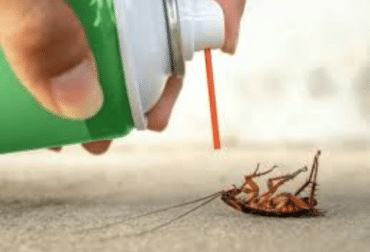
2. Dusts
Dust insecticides, also known as powders, are typically applied in cracks, crevices, and other hard-to-reach places that cockroaches use as hiding spots. When roaches travel through the treated areas, they pick up the dust on their bodies and ingest it while grooming, resulting in their death. Some dusts also have a residual effect, continuing to kill roaches that come into contact with it for weeks or even months after application.
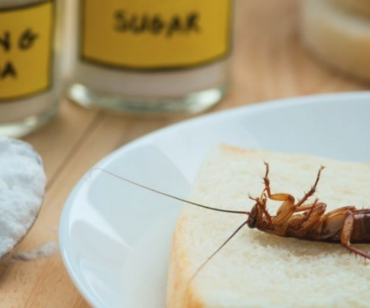
3. Baits
Cockroach baits contain a slow-acting insecticide incorporated into a food attractant. Roaches are attracted to the bait, consume the poison, and then go back to their nest, where they die. Other roaches in the nest can then become poisoned by eating the dead roach or their droppings, leading to a domino effect that can wipe out entire colonies.

When using insecticides, always read and follow the manufacturer’s instructions to ensure safe and effective usage. Keep in mind that while these products can be effective, they are often most successful when used in conjunction with other prevention and control measures. Also, some roaches can develop resistance to certain insecticides over time, so it might be necessary to switch products if you notice that one is no longer working.
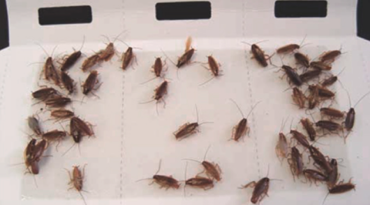
4. Traps
Cockroach sticky traps, often baited with food or pheromones, can help reduce the population and monitor the effectiveness of other control measures.
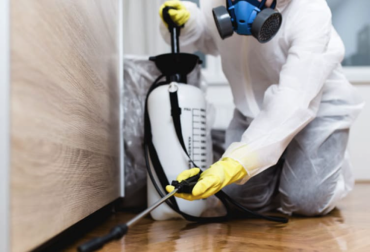
5. Professional Pest Control
For severe infestations or if you’re uncomfortable handling insecticides, consider hiring a professional pest control service. They have access to a range of professional-grade products and the expertise to use them effectively and safely. Pest control experts have access to more potent treatments and can ensure they’re applied safely and effectively.
Controlling cockroaches can be a challenging task due to their resilience and adaptability. However, with a good understanding of their behavior, diligent prevention strategies, and effective control measures, it is entirely possible to keep these roaches in check. Remember, the earlier an infestation is detected and addressed, the easier it will be to manage.
Roach Infestation
Cockroach infestations are a common, yet daunting issue faced by many homeowners and businesses worldwide. These resilient roaches not only pose a significant nuisance but also carry various diseases, making their control and eradication crucial for maintaining a healthy living and working environment. Understanding the nature of roach infestations and how to effectively address them can lead to a safer, cleaner space.
Roaches are nocturnal creatures that thrive in warm, damp environments. An infestation often begins unnoticed, with roaches hiding in cracks, crevices, or behind appliances during the day and emerging to feed at night. Signs of an infestation include sighting live or dead roaches, finding roach droppings, or noticing an unusual, musty odor.
Cockroaches are highly adaptable creatures that can thrive and breed in a variety of environments, particularly in places that provide food, water, and shelter. Here’s an enumeration of common places where roaches breed and thrive:
1. Kitchens
Kitchens are a hotspot for roach activity because they provide easy access to food and water. Roaches can be found under sinks or dirty dishes, behind refrigerators, inside cabinets, around stoves, and near garbage cans. They can also hide in appliances like toasters and microwaves.
2. Bathrooms
The consistent moisture in bathrooms makes them an attractive breeding ground for roaches. They often hide in drains, under sinks, behind toilets, and even inside tubs and showers.
3. Basements and Cellars
These areas are often dark, damp, and cluttered, making them ideal for roaches. They can hide in boxes, old furniture, piles of paper, and other stored items.
4. Garbage Bins and Dumpsters
These areas provide ample food sources for roaches, so it’s not uncommon to find them thriving here.
5. Sewers and Drains
Roaches can live in sewers and often enter homes through drains. The German cockroach, for instance, is known to climb up into homes from sewer systems.
6. Wall Voids and Cracks
Roaches love tight, dark spaces. They can often be found living and breeding inside wall voids, cracks in the floor, and gaps around pipes and electrical lines.
7. Behind Appliances
Roaches can hide and breed behind and under appliances like refrigerators, dishwashers, washers, and dryers. These areas are often warm and close to food or water sources.
8. Furniture
Old, upholstered furniture provides an excellent hiding place and breeding ground for roaches, especially if it’s rarely used or moved.
9. Yards and Gardens
Some species of roaches, like the American cockroach, prefer to live outdoors. They can be found in mulch, leaf litter, compost piles, and under rocks or logs.
Roach infestations are a serious issue that requires immediate attention due to the health risks they pose and their rapid reproduction rate. By understanding the nature of these roaches and employing effective control strategies, it’s possible to reclaim your space from these unwelcome invaders. The key lies in prevention, early detection, appropriate treatment, and persistent monitoring. To prevent roaches from thriving and breeding in these areas, it’s important to maintain cleanliness, promptly fix leaks, seal cracks and crevices, and store food properly. If you suspect a roach infestation, consider contacting a pest control professional.
German Cockroach
The German cockroach, Blattella germanica, is one of the most common and troublesome cockroaches found worldwide. Known for their rapid reproduction and adaptability, these small, nocturnal insects are a significant concern in residential and commercial settings, particularly in food service establishments. They are notorious carriers of several pathogens and can trigger allergic reactions in some individuals.
The life cycle of German cockroaches consists of three stages: egg, nymph, and adult. A single female can produce up to eight egg capsules in her lifetime, each containing around 30 to 40 eggs. This rapid reproduction makes cockroach infestations difficult to control.
German cockroaches are primarily nocturnal, hiding during the day in narrow, dark spaces and emerging at night to feed. They are highly adaptable and can survive under various conditions, but they cannot tolerate cold temperatures. Unlike some other roach species, German cockroaches are mainly indoor roaches. The following are ways German Cockroaches infest places:
1. Entry
German cockroaches can enter homes and other buildings in various ways. They might be brought in unknowingly in boxes, bags, secondhand appliances, or furniture. They can also migrate from neighboring infested areas.
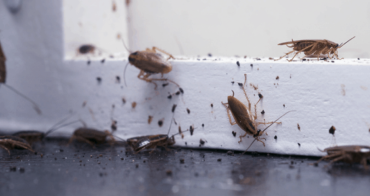
2. Breeding
Once inside, German cockroaches reproduce rapidly. A single female can produce up to 300 offspring in her lifetime. This quick reproduction rate can lead to large infestations in a short period.
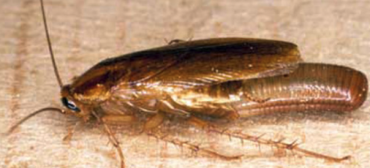
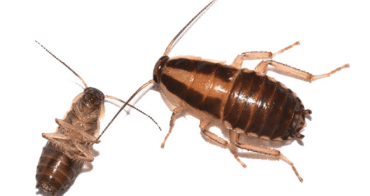
3. Survival and Spread
German cockroaches are omnivorous scavengers, feeding on almost anything, including crumbs, leftover food, and even glue. Their broad diet and ability to hide in small crevices allow them to survive and spread within a building.
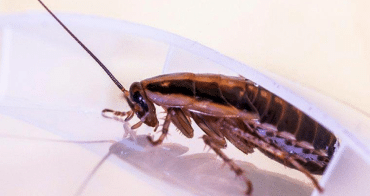
4. Health Risks
Besides being a nuisance, German cockroaches can pose health risks. They can carry pathogens that cause diseases like diarrhea, dysentery, and food poisoning. The presence of cockroaches can also trigger allergies and asthma, especially in children.
German cockroaches are unwelcome guests that can quickly infest homes and establishments, leading to significant problems. Their rapid reproduction, adaptability, and resilience make them challenging to control. Therefore, prevention is crucial, including maintaining cleanliness, sealing potential entry points, and regular inspection. With good sanitation practices, vigilance, and an integrated control approach, it is possible to manage and eliminate these unwelcome roaches. Remember that persistence is key, as German cockroaches are known for their resilience.
Cockroach Infestation
A cockroach infestation is a widespread issue that affects many households and businesses globally. These roaches are not only a nuisance but also pose significant health risks as they can carry various diseases. Understanding the nature of an oriental cockroach infestation and how to tackle it effectively is essential for maintaining a healthy living or working environment.
Cockroaches are opportunistic creatures that thrive in environments where food, water, and shelter are readily available. They are nocturnal, hiding during the day and emerging at night to feed. Signs of an infestation include sighting live or dead roaches, discovering roach droppings, egg cases, or experiencing a musty odor in the area.
1. Prevention
Prevention is the best method to combat a cockroach infestation. This involves maintaining cleanliness, promptly addressing any water leaks, sealing possible entry points, and storing food in airtight containers.
2. Maintaining Cleanliness
Cockroaches are attracted to food sources and thrive in dirty environments. Regular cleaning can significantly reduce the risk of infestation. This includes sweeping and mopping floors, wiping down countertops, and cleaning behind appliances regularly to eliminate crumbs and spills. It’s also important to clean dishes immediately after meals and avoid leaving pet food out overnight.
3. Addressing Water Leaks
Cockroaches need water to survive and are attracted to moisture. Therefore, any leaks, even minor ones, can attract these pests. Regularly check your home for leaks, especially in the kitchen and bathroom. Don’t forget to address humidity issues, as high humidity can also attract roaches.
4. Sealing Entry Points
Cockroaches can enter homes through small cracks and crevices. Inspect your home for possible entry points, paying special attention to areas where utilities and pipes enter the building. Seal these cracks with caulk or another suitable material. Don’t forget to inspect doors and windows for gaps and repair if necessary.
5. Storing Food Properly
Leaving food out in the open can attract cockroaches. Always store food in airtight containers, including pet food. Additionally, keep your pantry and refrigerator clean and organized, regularly checking for and disposing of expired items.
6. Identification and Inspection
If an infestation is suspected, the first step is to identify the species of roach as this could affect the control strategy. A thorough inspection should then be conducted to determine the infestation’s extent and locate key activity areas.
7. Treatment
Various methods are available to treat a roach infestation, including baits, sprays, dusts, and traps. In severe cases, professional pest control services may be required. It’s important to remember that treatment is usually an ongoing process due to the resilience and rapid reproduction rate of cockroaches.
8. Monitoring and Maintenance
After treatment, regular monitoring is crucial to ensure the infestation does not return. This may involve routine inspections, use of traps, or continued application of control measures.
Cockroach infestations are a serious concern that requires immediate attention due to the potential health risks associated. However, with an understanding of their habits, effective prevention strategies, and the implementation of suitable treatment methods, it is possible to control and eradicate these pests. Remember that the key to killing cockroaches control lies in prevention, early detection, appropriate treatment, and consistent monitoring.



